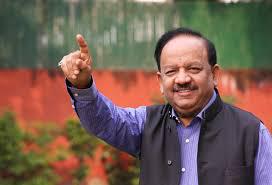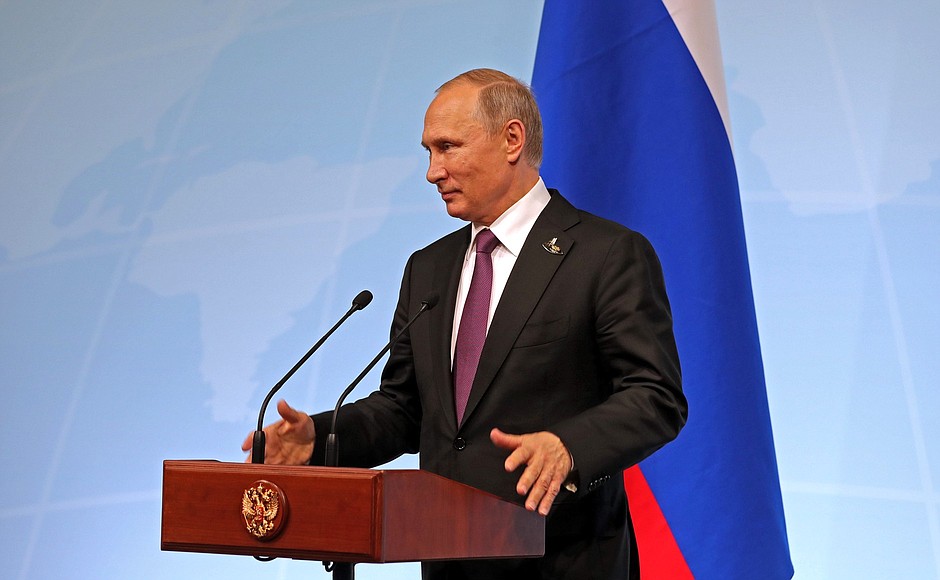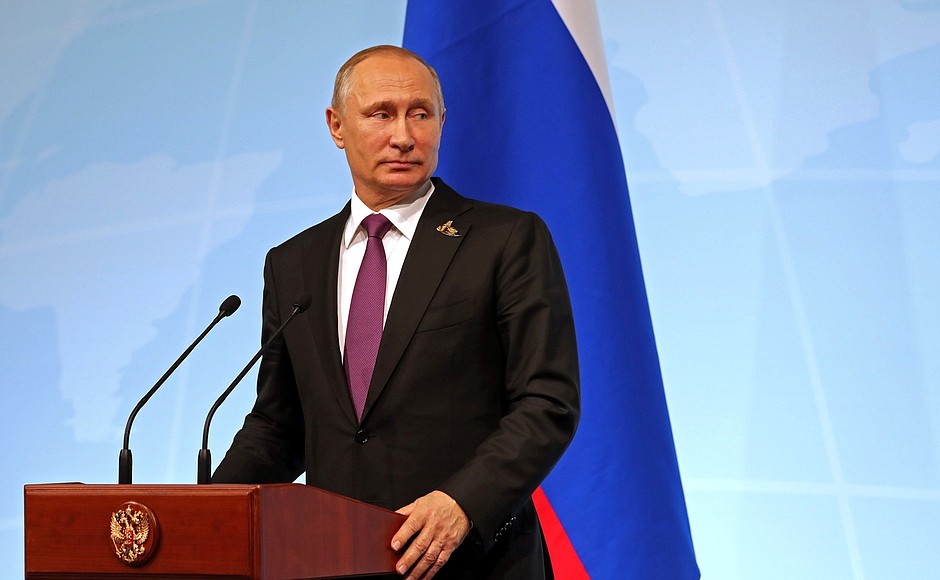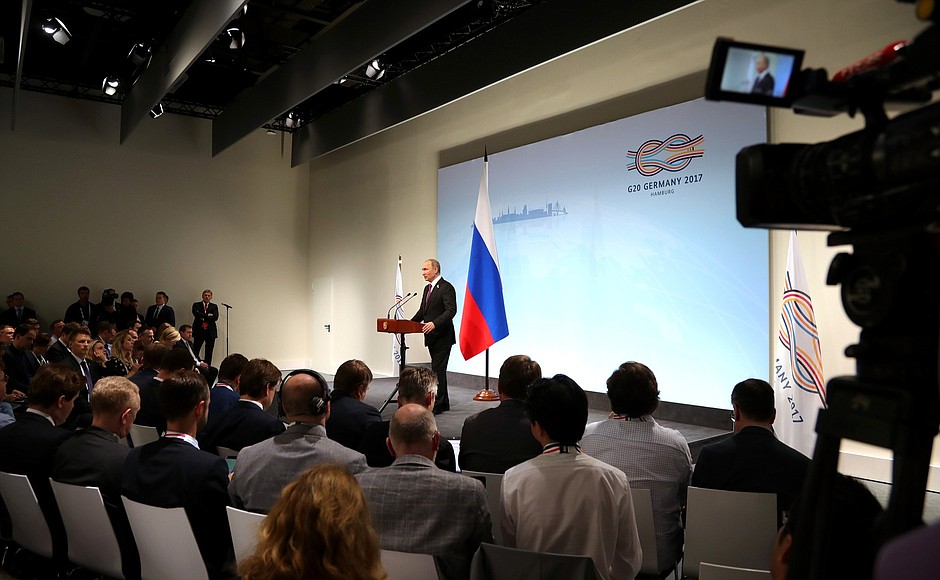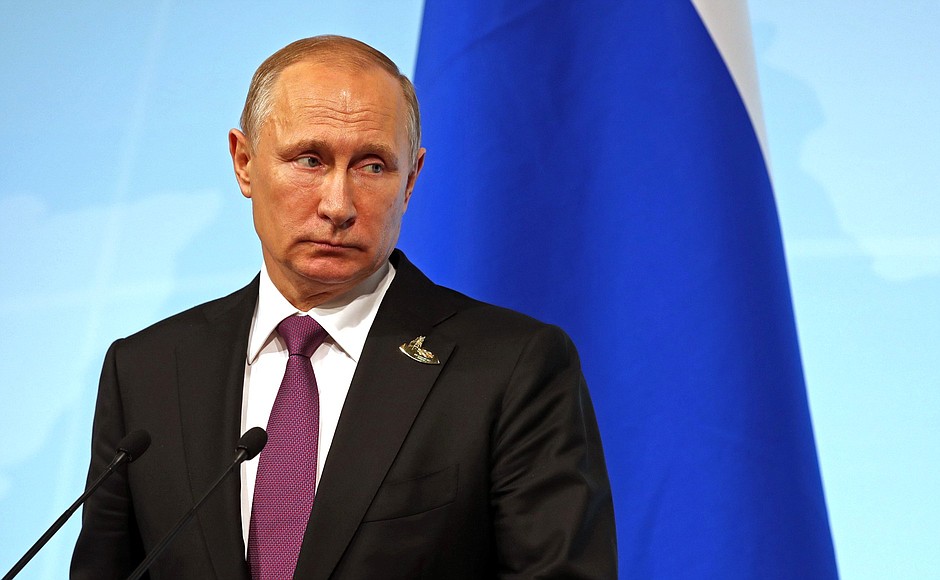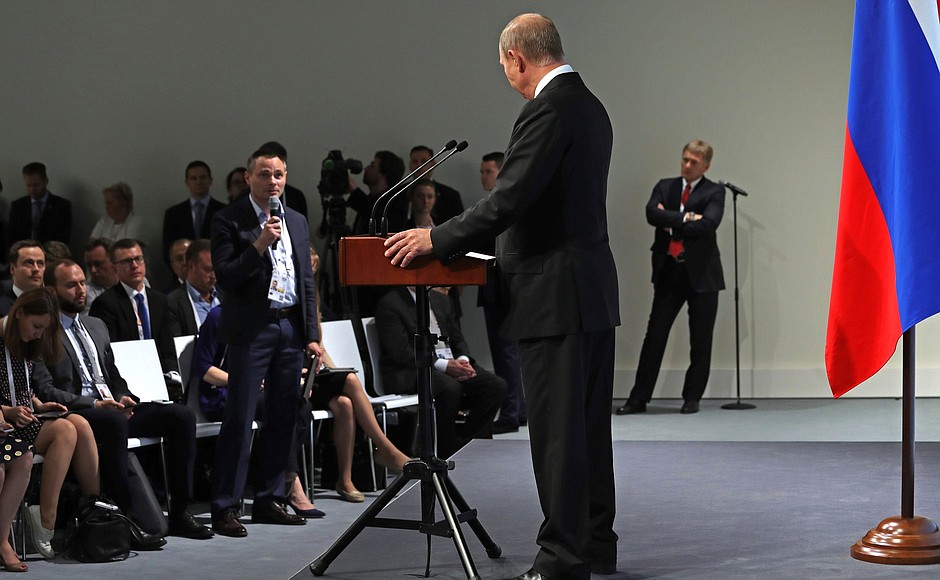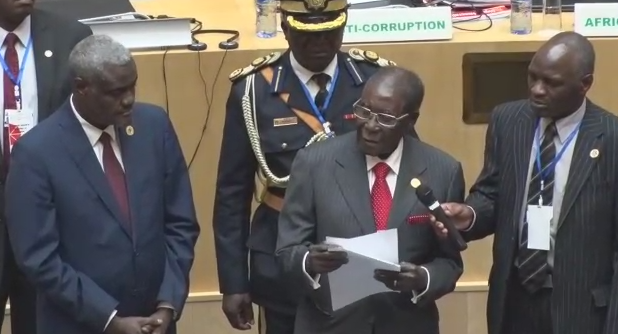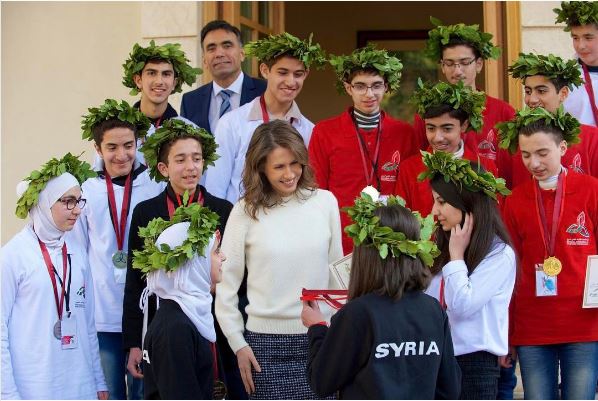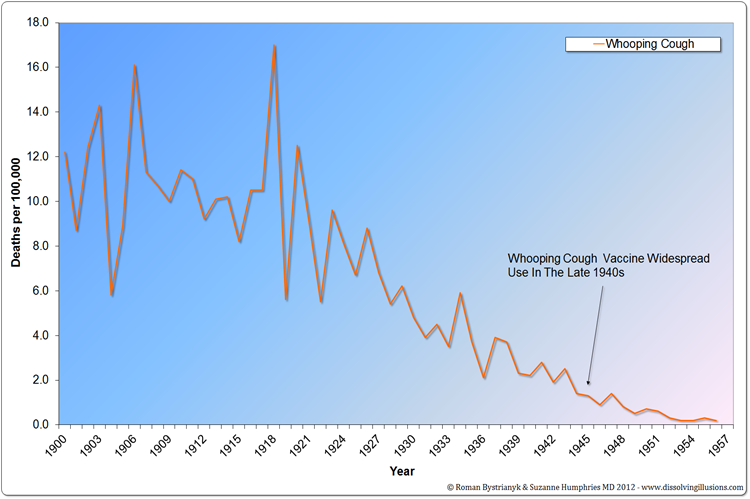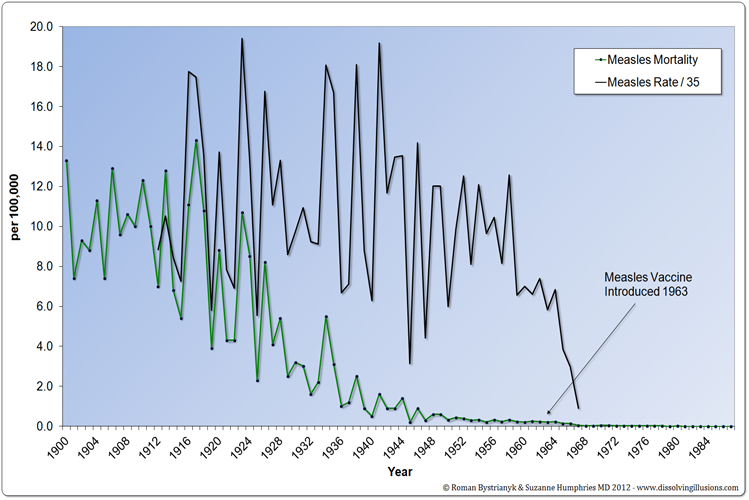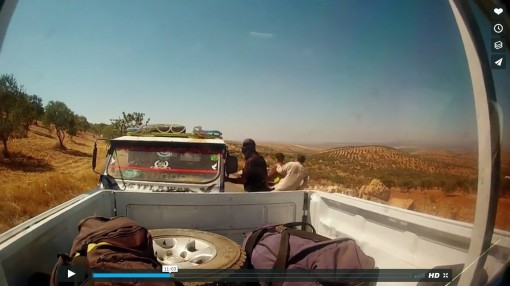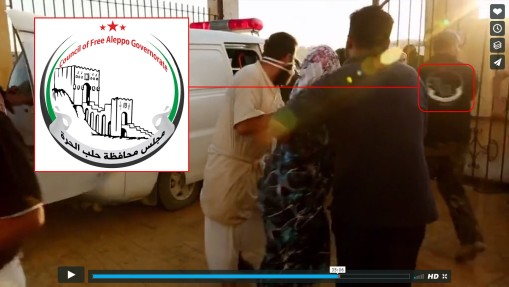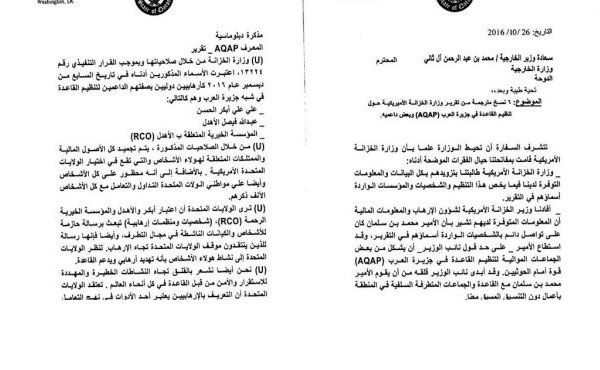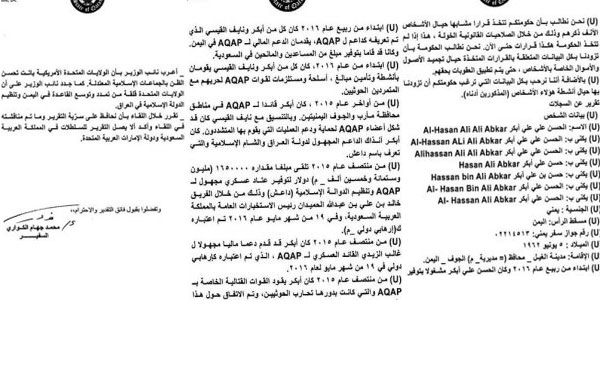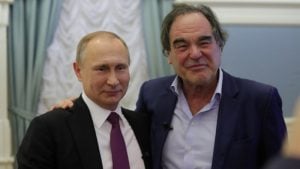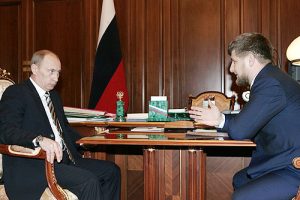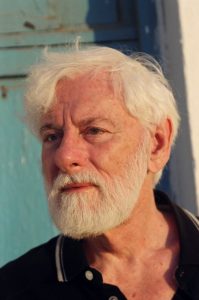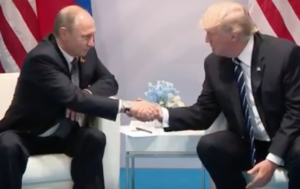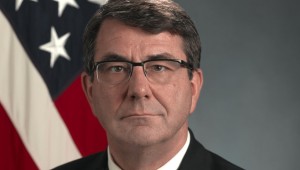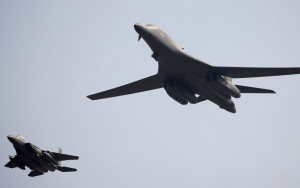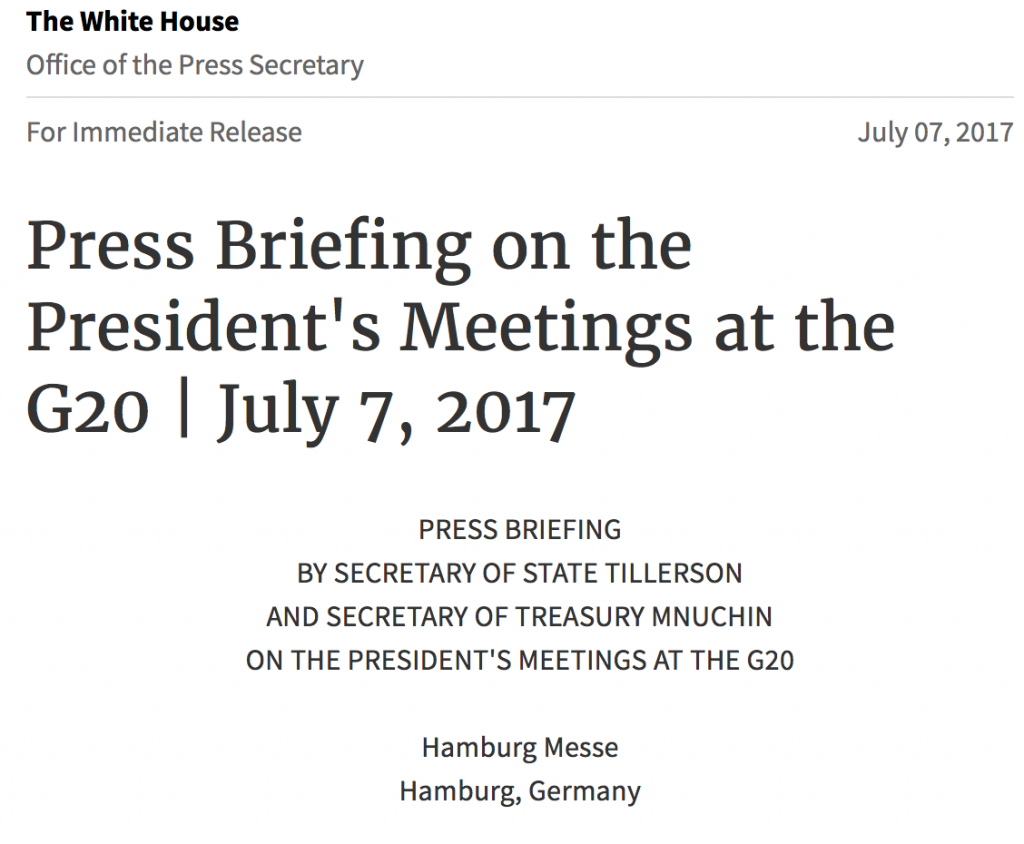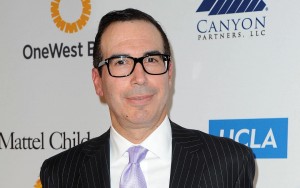I – Poison Colonies
“Indian civilisation is based on gratitude, to our farmers and all beings who contribute to our food.” — Annadata Sukhibhava
5 Jul 2017 – We believe in “Uttam – Kheti, Madhyam – Vyapar, Neech – Naukri.” India’s small farmers produce more diversity, more food and nutrition per acre than farmers in industrialised countries. Even today, they feed more than 1.3 billion people.
Then why are Indian farmers committing suicide today?
The root cause is the separation of agriculture from nutrition, and from ecology.
For 10000 years we have farmed to produce nourishment for the soil and society. The combination of the “Green Revolution” in Punjab (imposed in the 1960’s) and the corporate globalisation “reforms” (which started in the 1990’s) have created policies for “Annadata Dukhi Bhava”, undermining our 10,000 year civilisational heritage of Earth first and farmers first policies. The dominant policies of agriculture today, driven by global corporations, are corporate profits first, farmers last, the earth lost.
The consequence is a rapid unfolding of social and ecological non sustainability, threatening our farmers and the future of भारत as a living, life giving civilisation. Our agriculture is eroding, down to a toxic blueprint designed by the poison cartel. 3,18,000 farmers have committed suicide since 1995 – when globalisation of agriculture flagged off the hijack of our seeds, our agriculture, our food systems. The suicides continue.
Now farmers have started to wake the nation up, to the farming crisis, with the strike in Maharashtra and MP. Instead of gratitude and justice, they got bullets. This is not what democracy looks like, from any angle, with any filter, with or without spin. This is not the expression of our civilisational values.
The suicides are concentrated in regions where the Green Revolution has invaded agriculture – destroying diversity, destroying indigenous agriculture, destroying farmers self reliance, destroying soil and water. Suicides are taking place where globalisation policies have destroyed the diversity of crops and diversity of markets. Farmers are growing monocultures and are dependent on a single buyer – the government or a corporation – to buy what they grow, as a commodity for trading posts.

The Roots of the contemporary Agrarian Crisis lie in 50 years of the chemical intensive, capital intensive, monoculture based “Green Revolution”, and 20 years of corporate globalisation, which has transformed Indian Agriculture into a market for costly seed and chemical inputs and a supplier of cheap commodities. Continuing on the path shaped by global corporations and US interests will only make the crisis worse. Getting rid of the small farmer has been the intention of Industrial Agriculture. Getting rid of India’s small farmers has been the aim of every government since globalisation was forced upon us. It continues to be the main call after the farmers protests started in June 2017. Farming without farmers is the new slogan of industry. But this means farming with more fossil fuels, more chemicals. The end of farmers, is the end of real food, an end to producers; it is the rise of the processors.
We must change our agriculture from a chemical intensive, capital intensive, debt and dependency creating, path to a biodiversity intensive, ecologically intensive, zero external input system which rejuvenates the earth and farmers prosperity, and with it provides real food to citizens and creates true prosperity of a people and their nation.
The Green Revolution works against the Earth. It is based on war chemicals, and manifests as a war against the earth, against the farmers, our Annadatas, and against innocent citizens suffering from an epidemic of chronic diseases because they are being condemned to eat nutritionally empty, toxic commodities, instead of food.
Debt for purchase of costly non renewable seeds and unnecessary toxic inputs is the primary reason for farmers suicides and farmers protests. While the immediate short term measure is debt relief and higher MSP, the longer term, lasting solution to the agrarian crisis is a debt free internal input ecological agriculture called by a variety of names – agroecology, organic, zero budget, permaculture, biodynamic, vedic krishi, natural farming etc etc.

The government – driven and controlled by MNCs – is planning to deepen this debt trap, to create more markets for costly seeds and chemicals. The 2017 budget has Rs 100,000 Crores allocated for agricultural credit, which means encouragement to farmers to get into more debt for more chemicals and more hybrid and GMO seeds from multinationals. This is a recipe for a deeper debt trap and an increase in the resulting suicides.
We have, across the country, success stories of farming without chemicals – producing more food, more nutrition, while increasing farmers incomes. Navdanya’s own experience has shown that chemical free biodiversity based farming produces more nutrition per acre and can feed two India’s. Farmers using their own seeds and their own ecological inputs, growing diverse and nutritious foods that people need and want, and creating their own markets without middlemen, can increase their incomes 10X to 100X.
There is absolutely no reason for a single farmer to commit suicide, nor for a single child to be wasted and stunted in our abundant Bharatvarsh.
Wherever farmers are practicing biodiverse ecological farming and participate in diverse markets they control, there is no debt, no farmers suicides. Suicides are taking place where farmers have become dependent on buying costly seeds and costly chemicals as inputs, they have been forced to give up diversity, to grow a commodity crop which can only be sold to government or traders, or the corporations behind both. Buyers are driving prices down. Squeezed between ever increasing costs and falling prices, the farmers are trapped, and in hopelessness they are committing suicide.
The way out of the epidemic of farmers suicides:
LOWER COSTS : lower the costs of production to zero through natural, ecological, organic farming and saving, selecting, breeding, and exchanging indigenous open source seeds.
INCREASE NET INCOMES : increase net incomes by saving on unnecessary expenses for toxics, including toxic seeds , and growing diverse , healthy, nutritious, chemical free crops for diverse markets.
INCREASE CLIMATE AND MARKET RESILIENCE : In addition to high costs of chemical farming, chemical farming is making farmers vulnerable to climate change, and exposed to volatile money markets. Diversity creates resilience, both to an unpredictable climate and an exploitative market.

Small farmers are our Annadatas :They are the foundation of Bharat, her health, her prosperity. They produce more than large industrial farms.
There is a common myth – that small farms are unproductive and that an increasing population requires an increase in productivity, which in turn requires large farms, which in turn requires a concentration of land ownership. To feed the people, the industrial, empirical prerogative is to take away their land.
All the scientific evidence is showing that small farms are more productive than large farms.
The International Assessment of Agriculture Knowledge, Science and Technology (IAASTD ) has clearly shown that small agroecological farmers are more productive.
IAASTD’s Agriculture at a Crossroads report, vol. V
removed from
http://www.unep.org/dewa/agassessment/reports/subglobal/Agriculture_at_a_Crossroads_Volume%20V_Sub-Saharan%20Africa_Subglobal_Report.pdf
still available at
http://www.fao.org/fileadmin/templates/est/Investment/Agriculture_at_a_Crossroads_Global_Report_IAASTD.pdf
The UNCTAD Trade and Environment Review 2013 Titled “Wake Up Before it is Too Late” stresses that a paradigm shift is needed – from chemical intensification to ecological intensification.
http://unctad.org/en/PublicationsLibrary/ditcted2012d3_en.pdf
The United Nations Environment Programme in “Preventing Future Famines” shows how small ecological farms enhance productivity through ecological functions.
https://mahb.stanford.edu/wp-content/uploads/2013/02/2012-UNEP-Avoiding-Famines-Food-Security-Report.pdf
Lancet, the leading medical journal has recognised that only small farms have diversity, and diversity is vital for health.
https://www.google.co.in/search?client=safari&rls=en&q=Small+farmers+produce+more&ie=UTF-8&oe=UTF-8&gfe_rd=cr&ei=JSVRWbLpE4jy8Af7q7WgBg
http://www.iiasa.ac.at/web/home/about/news/170405-lancet.html
https://blogs.csiro.au/ecos/small-farms-need-protection-to-safeguard-nutrients-and-diversity/
Navdanya’s report on Biodiversity Based Productivity and Health per Acre shows that small biodiverse farms produce more food and more nutrition than chemical monocultures.
http://www.navdanya.org/attachments/Health%20Per%20Acre.pdf
Navdanya’s 1 acre diverse model farm can produce Rs 400,000 worth of grains, vegetables, fodder, medicinal plants over the rabi and kharif season. This is evidence from studies of small biodiverse ecological farms.
India is a land of small farmers, and the small farmers feed the nation of 1.3 billion. They are India’s Annadattas. Today our Annadatas, are trapped in debt. 300,000 famers have committed suicide since 1995, and the epidemic of farmers suicides is increasing as the seed slavery and food slavery (created by giant corporations) spreads through globalisation and neo-liberal economic reforms.
Globalisation is based on the myth that small farmers are unproductive and should be driven off the land and replaced by giant industrial farms. This is scientifically false, and socially unjust. All scientific evidence shows that small farms are more productive than large farms.
As our former Prime Minister Charan Singh wrote:
“Agriculture being a life process, in actual practice, under given conditions, yields per acre decline as the size of farm increases (in other words, as the application of human labour and supervision per acre decreases). The above results are well nigh universal :output per acre of investment is higher on small farms than on large farms.Thus, if a crowded, capital scare country like India has a choice between a single 100 acre farm and forty 2.5 acre farms, the capital cost to the national economy will be less if the country chooses the small farms”.
Globally, small farms produce 70% of the food we eat using 25% of the land, while industrial farms produce only 30% food, using 75% of the land, and also destroying 75% of the soil, water, biodiversity, while emitting 50% of the Green house gases that are polluting the atmosphere and destabilising the climate system.
Industrial agriculture produces commodities, not food. 90% of corn and soya grown in the world go for Biofuel and animal feed. Real food can only be produced on small farms which are biodiverse, ecological and chemical free. Large farms grow monocultures, using intensive chemicals, and energy intensive mechanisation. The costs of production in chemical, industrial agriculture systems is higher than the value of the output. Without giant subsidies they cannot survive. Industrial farming is inherently unviable.
Making farmers dependent on purchase of costly inputs is the source of super profits of global corporations. It is also the reason for farmers debt and distress. Toxic Corporations like Monsanto are also trying to own the seed. They are creating new commodities to sell to farmers, and get them trapped in deeper debt and slavery. Monsanto has bought the climate data corporation to sell climate data to farmers as well as insurance. Monsanto sees the insurance market as $3 trillion. Monsanto has bought the Soil Data corporation and will sell soil data to farmers. In addition it has joined hands with Silicon Valley firms to create spyware for farm machinery and for surveillance drones. This is a vision of slavery and total destruction of seed freedom and food freedom. It is s.m.a.r.t.slavery.
We have successfully resisted over the last 30 years, and will continue to resist corporate rule over the next 30. We will continue to defend our small farms to grow healthy, poison free food for our country. Corporations as middle men are siphoning off 99% of the value of food farmers produce through multiple forms of Lagaan. They make additional profits by extracting nutrition from food through industrial processing. Both producers and eaters loose, while corporations make profits from both.

II – Corporate Globalisation
A death knell for Small Farmers
The second major contributor to farmers distress is corporate globalisation. Written in the WTO – referred to as “economic reforms“ by the neo liberal policy makers who ran the erstwhile planning commission and now run the Niti Aayog. Corporate agriculture has always had the aim of driving small farmers off the land (first as workers, into factories, now being told the future is without work ). Both because the small farmers show there is a better way of farming, and because they are sovereign producers. The freedom and high productivity of small farmers has therefore been at the centre of all policies of industrial, corporate agriculture.
The rules of corporate globalisation were written by global corporations.They were designed to destroy India’s food and agriculture production and wipe out India’s small farmers. This is precisely what they have done.
The WTO rules that are causing distress in Indian agriculture have also aggravated the hunger, malnutrition and disease epidemic, they are:
- The TRIPS agreement drafted by Monsanto. Through which Monsanto tried to seek patents on seeds. Even though India does not allow patents on Seeds, Monsanto has been collecting royalties illegally for Bt cotton Utility- Collecting royalties is the main reason for pushing GMOs. This is also the reason the Bayer GMO mustard is being pushed with Pental as a Trojan horse.
- The Agreement on Agriculture drafted by Cargill and the agribusiness industry.
Utility- for market access to domestic markets through trade liberalisation
- The SPS agreement drafted and promoted by the global food processing industry such as Nestle, Coca Cola, Pepsi, Tyson etc. Utility- to impose pseudo safety standards in order to shut down the household and cottage food processing industry in India, and deregulate the unhealthy industrial food processing operations.
Globalisation Myths in Food and Agriculture
Pseudo Productivity, Pseudo Competition & Pseudo Surpluses
Globalisation is supposed to improve efficiency and productivity, and it is supposed to increase competition and choice. In the area of food and farming, globalisation is based on three faulty assumptions:
- Globalisation will lead to a spread of the most productive and efficient farming systems. It will therefore lead to increased food production as well as conserve land, water and biodiversity.
- Globalisation will lead to increased access to the best food and will lead to decrease in food scarcity and hunger. It will improve food security and food safety.
- Globalisation will lead to increased competition and will improve the incomes and condition of farmers by increasing their bargaining power and choice.
However, the reality of globalisation and its impacts on food and farming is contrary to this projected mythology of prosperity and abundance.
Globalisation of food and agriculture has led to:
- Globalisation of non.sustainable industrial agriculture.
- Globalisation of rural poverty, and destruction of farmers’ livelihoods and dramatic decline in farmers’ incomes.
- Globalisation of hunger.
Our food and farming systems are in deep crisis. Food scares are spreading (highlighted by the Mad Cow Disease and GMOs). Farmers are committing suicides in thousands or selling their kidneys to pay back debts incurred for high cost agricultural inputs – such as seeds and pesticides, which were supposed to have brought them prosperity by increasing their productivity.
The prosperity that globalisation was supposed to spread is also proving elusive. Prices of agricultural commodities are collapsing, as import restrictions are removed and uber-subsidised products flood domestic markets, while domestic producers are denied price support and procurement subsidies.
Farmers loose, consumer looser.
Low prices to farmers does not mean low prices for Third World consumers, the majority of whom are desperately poor and already malnourished. Food prices are rising in the Third World, as food subsidies are removed, and the polarisation, between prices farmers receive and prices consumers pay, increases. Prices of food are also increasing as vertical integration increases corporate profits, and as pseudo hygiene laws are used to legally ban low cost, culturally and economically appropriate food processing systems — like the ghanis (tiny cold pressed oil mills) the chakkis (the small family run flour mills) the halwai shops (sweet and savoury snack makers).
The livelihoods and food rights of millions are being robbed, as Indian agriculture is being reduced to a market for global corporations — for their seeds and agrichemicals, for their processed foods, for dumping their subsidised grains and commodities. The corporate takeover of Indian agriculture has been facilitated by the globalisation of agriculture, through the imposition of Structural Adjustment – by the World Bank and IMF, and the trade rules of W.T.O. as embodied in its Agriculture Agreement and TRIPs Agreement. This corporatisation is now part of the National Agriculture Policy. US interest, our policy?
The trade liberalisation rules have camouflaged the corporatisation of agriculture by creating meaningless jargon around “competitiveness”. “market access”, “aggregate measure of support”, “etc.”, which hide the emergence of corporate monopolies, the dumping of subsidised products, and the growth of corporate subsidies.
Demystifying Trade Liberalisation
This report is aimed at demystifying trade liberalisation in the food and agriculture sectors: highlighting its impacts on the livelihoods of farmers, food security and food rights of all, and proposing changes, both in global trade policy and in the national agriculture policy to ensure that the natural resource base of agriculture is conserved, livelihoods of small farmers are protected, the nutritional security and food security of consumers is Increased and the productivity of our agriculture is enhanced.
The report addresses the crisis of non-sustainable food production, the crisis of food security and hunger, of food rights and food entitlements and the crisis of farm prices and marketing, resulting from the growth of monopolies and anti-competitive practices.
Outside In – the Globalisation of Non-sustainability
Pseudo Productivity and the Myth of Efficiency
70% of the world’s food is produced by local farming communities, especially women. Farming systems of the world have been diverse, reflecting diverse agro-climatic features on the one hand, and diverse food cultures on the other. In fact, the diversity of agricultural systems and cultural diversity of food systems have co-evolved by a mutual interplay of nature and culture, of biodiversity and cultural diversity.
Globalisation of agriculture had led to the rapid destruction of diverse farming systems and displacement of small farmers worldwide. The destruction of the environment and rural livelihoods is an inevitable consequence of the globalisation of industrial agriculture. This is usually justified as necessary in order to produce more food.
Industrial agriculture includes the chemicalisation and mechanisation of agriculture as in the case of the Green Revolution. It also includes genetic engineering. The farmers crisis is not per-chance. It has been designed, and enacted through globalisation and neo liberal policies that put corporate profits first, and farmers last. Beginning with the 1991 new economic policies imposed on agriculture as part of the World Bank Structural Adjustment policies (SAP), “development” of the design commenced.
Globalisation is based on external liberalisation. External liberalisation is foreign trade and foreign investment driven liberalisation. External liberalisation serves external interests. Agriculture liberalisation under SAPs is an example of such external liberalisation, it consists of the following elements:
- Liberalising fertiliser imports, and deregulating domestic manufacturing and the distribution of fertilisers.
- Removing land ceiling regulation
- Removing subsidies on irrigating electricity and credit, thereby creating conditions to facilitate the trading of canal irrigation water rights
- Deregulating the wheat, rice, sugarcane, cotton, edible oil and oilseed industries
- Dismantling the food security system
- Removing controls on markets, traders, and processors, and subsidies to cooperatives
- Abolishing the Essential Commodities Act
- Abolishing the general ban on future trading
- Abolishing inventory controls
- Abolishing selective credit controls on inventory financing
- Treating farmers’ cooperatives on an equal footing with the private sector
The foregoing elements of SAP are recipes for removing centralised state control over agriculture. But concentrating it, now even further into the hands of agribusiness and Transnational Corporations (TNCs) such as Monsanto, Cargill and PepsiCo —who are emerging as the new Zamindars controlling not just land use, but also water use and seeds.
Internal liberation
What is required for us is not external liberalisation but an internal liberalisation of agriculture. Internal liberalisation implies liberating agriculture in the direction of enhancing self-regenerative ecological processes and enhancing ecological and livelihood security.
In particular, this includes:
- Freeing agriculture from high external inputs such as chemical fertilizers and pesticides and making a transition to sustainable agriculture based on internal inputs for ecological sustainability
- Freeing farmers from capital intensive farming and debt
- Freeing peasants from landlessness
- Freeing farmers from fear of dispossession by monopolies of land, water and biodiversity
- Freeing the poor from the spectre of starvation by ensuring food as a human right
- Freeing rural people from water scarcity by ensuring inalienable and equitable water rights
- Freeing knowledge and biodiversity from IPR monopolies
- Rebuilding local food security, reinvigorating local markets
The attack on Farmers Seed Sovereignty
Monsanto did not succeed in getting patents on seeds through, because our national democratic efforts led to the introduction of Art 3j in our amended Patent law, disallowing patents on Plants, Animals and Seeds India also introduced the Plant Variety and Farmers Rights Act.

However, Monsanto illegally introduced Bt Cotton in India in 1998. Monsanto established a monopoly, and extracted super profits via illegally collected royalties on Bt cotton seeds, from Indian farmers, trapping farmers in debt, pushing hundreds of thousands of cotton farmers to suicide them to suicide. Without conference, without information, sans consent.
Monsanto is challenging Article 3j in the High Court of Delhi. Its lawyer was a member of the group of neolibs writing a new IPR policy.
Monsanto is challenging the Competition Commission of India that is investigating its Bt Cotton Seed Monopoly.
Bayer has now merged with Monsanto. Bayer is pushing a herbicide resistant GMO mustard which was rejected in 2002, using Pental as a trojan horse. Pental is also arguing against Article 3j of our patent law. Most of the patents related to the GMO mustard are Bayer patents.
Inspite of the evidence, that Bt cotton has failed, and that the GMO mustard has lower yields than non GMO mustards, the NITI Aayog is pushing GMO seeds as the future of India’s agriculture. Hell bent on breaking down the protections we have built into our systems.
Anil Madhav Dave, the late environment minister was not ready to give approval to GMO mustard. He died mysteriously on 18th May 2017, much like Lal Bahadur Shastri – who was not giving approval to the Green Revolution, and also died mysteriously, in Tashkent on 11th Jan 1966.
Rising Costs, Falling Prices: The attack on farmers’ hard earned income and the creation of the negative farm economy.
Agrichemical and agribusiness corporations wrote the rules of WTO. They have only one objective: to make profits by increasing their markets.
Increasing markets for chemicals and corporate seeds translates into higher costs of production for the farmer. Farmers land holdings have not increased, thus an increase in profits comes from:
- increased subsidies
- increased market penetration, or
- increased price of industrial product
Increasing markets for agribusiness means falling prices for farm produce.
Farmers falling incomes, with costs of production outstripping the price of the produce, is making agriculture unviable under corporate driven policies.
Their are 2 ways in which agribusiness is capturing the Indian agriculture market.
- Firstly, by importing and dumping subsidised, inferior products.
- Secondly, by capturing domestic trade by destroying APMCs and local distribution channels, creating private corporate procurement, and imposing contract farming.
The creation of import dependency for oilseeds and pulses are examples of the destruction of local economies, and with them the livelihood of farmers growing oilseeds and pulses.
Unnecessary import of Fake Edible Oil: Palm Oil and GMO soya
India can produce enough oilseeds that are diverse, healthy, safe, and culturally appropriate.
1990s
In the 1990’s India had become self sufficient in edible oils as a consequence of the conscious commitment to grow more oilseeds. The policy was called the “Yellow Revolution. It worked. In 1993-94 India was producing 97% of her requirements.
In 1998, the same year that Monsanto sneaked in its BT cotton, the MNC’s engineered a crisis, got indigenous oilseeds banned and dumped GMO soya oil on India by manipulating a drop in Import Duties. India had bound its import duties at 300% in the WTO. The US lobbies had soya oil duties reduced to 45%. In the stage-managed crisis of 1998, the duties were dropped to 0%. In addition, the soya bean was subsidised by $190/tonne by the US govt, and Rs 15/kg by India.
No wonder India was flooded with imports, not because of domestic scarcity but because of manipulated prices, manipulated trade and manipulated policy. The women of the slums of Delhi called me, to say their children could not eat the food cooked in Soya oil, that they wanted the mustard oil back. So we organised the “Sarson Satyagraha” in 1998 and saved our mustard.
But the imports kept increasing through dumping and manipulating of policy. Compared to1.02 million tonnes edible oil imports in 1996-97, India’s imports doubled to 2.98 million tonnes in 1998-99, and then jumped to 5 million tonnes in 1999-2000.
Today
Today we are importing more than 60% of our domestic requirements. And destroying our coconut, sesame, groundnut, safflower, niger, mustard, linseed diversity and healthy food economy, for GMO soya which is destroying the Amazon, and palm oil which is destroying the Indonesian rainforests. The planet is loosing, Indian farmers are loosing livelihoods, Indian citizens are loosing health.
http://www.thehindubusinessline.com/economy/agri-business/oil/article9349762.ece
Enough
We can grow enough oilseeds to meet India’s needs. As the farmers’ organisations wrote in a letter to the Environment Minister, Anil Dave –
“Oil seed production has taken a hit due to bad pricing/procurement support from the government, and inappropriate anti-farmer import policies adopted by the government. It is not because we are unable to produce enough or do not have the seeds or know how. If the pricing, procurement and import policies are made farmer friendly we assure you that we can produce all the mustard and other oil seeds the country needs.”

The government of India is (again) being manipulated by the same interests that forced the edible oil imports on us, in order to force GMO Mustard on us in the name of reducing import dependence. While the argument is one of reducing imports, the government did not procure oilseeds from India’s farmers in 2017, further increasing their distress.
Unnecessary Import of Fake Pulses and Corruption
Pulses are truly the pulse of life for the soil, for people and the planet. In our farms they give life to the soil by providing nitrogen. This is how ancient cultures enriched their soils. Farming did not begin with the green revolution and synthetic nitrogen fertilisers. The displacement of biodiversity, by monocultures of Bt cotton and sugarcane, in the semi arid regions of Maharashtra, has contributed to both water scarcity and the farmers crisis.
This area earlier grew pulses. We are therefore growing nearly 10 million tonnes less pulses.
Further, under the new private partnership of the government of Maharashtra with ADM, farmers are receiving half the MSP.
http://www.ficci.com/spdocument/20539/SOYBEAN-Report.pdf
With the artificially created pulse scarcity India, prices of pulses have taken dal beyond the reach of Indians. Tur reached Rs 200 a kilo in 2015. The govt is using the scarcity to import pulses. Today we are the biggest importers. And since the rest of the world does not grow the diversity of pulses we grow, what is being imported cannot replace the diversity necessary for the Indian diet. Large quantities of yellow pea from US and Canada are imported at the cost of billions of dollars.
In 2012 the CAG had audited the pulse imports. The CAG had particularly pointed to the import of yellow pea.
“YELLOW PEAS
Without taking into consideration the food patterns, the Government in 2007 imported yellow peas.
When the peas found no takers, they were sold after prolonged delays, at very low rates, with heavy losses to the importing agencies.”
The MoCA and F&PD decided in 2008 that the agencies need not go for further contracts of yellow peas, but the Union Cabinet in 2009 decided to allow the agencies to import these.
The agencies continued to import even when they had huge unsold stocks, resulting in a loss of Rs. 897.37 crore, 75 per cent of the total loss of Rs. 1,201.32 crore”
But the loss is not only to the exchequer.
Import of yellow pea translates into importing nutritional deficiency for people and the soil and decline in soil health. In 2015-16 India planned to import more than 5 million tonnes of yellow pea from Canada and US, we will not be told whether it happened.
Yellow pea has only 7.5 percent protein compared to indigenous pulses having 20-30%. Importing 5 million tonnes of yellow pea instead of growing our own pulses is thus equal to 1 million tonnes of protein debt created for Indians. Not growing 5 million tonnes is depriving our soils of more than 1 billion kg of nitrogen.
https://www.fatsecret.com/calories-nutrition/generic/green-or-yellow-split-peas-dry-cooked?portionid=51928&portionamount=100.000
In 2017 farmers had abundant pulse production. But in-spite of promises, the government failed to procure and offer the just MSP.
In June 2016 the Government had announced a bonus above MSP of Rs 425 for Tur and Moong.
http://timesofindia.indiatimes.com/india/MSP-of-pulses-and-oilseeds-hiked-to-motivate-farmers/articleshow/52545498.cms
http://www.business-standard.com/article/markets/pulses-import-to-fall-by-20-in-fy18-on-better-domestic-output-117050400820_1.html
But at harvest time the government was missing, making an abundant harvest turn into farmers distress. Design.
And the imports were not stopped in-spite of an abundant harvest, showing clearly that the government has higher commitments to corporations and their kickbacks than justice to farmers, that in the neo-library, trade trumps farms. Execution.
Pulse imports grew 20% to 5.67 million tonnes in the financial year 2017, farmers’ harvest cheaply procured for the food “industry”. Success.
“A record high crop output, along with record imports, has created a mayhem in pulses market, with farmers unable to sell pulses even at the minimum support price announced by the government. In FY17, the total import if pulses increased 19.9 per cent to 5.67 million tonnes, which, along with 22.14 million tonnes of crop, has improved the availability for the year by around 27.8 million tonnes, against the average normal consumption of 24 million tonnes”
http://www.business-standard.com/article/markets/pulses-import-grew-20-per-cent-to-5-67-million-tonnes-in-fy17-117050300247_1.html
Solution
Reversing the Agrarian Decline and Stopping Farmers Distress, Taking the Road to Samriddhi through Swalamban
The first and immediate step in stopping the distress is freedom from debt. Farmers have been forced into debt by government policies promoting corporate agriculture. Since the government has promoted corporate driven policies, it is responsible for the debt crisis farmers face.
It must waive the loans of farmers, and stop creating new debt traps through credit, intended to expand corporate markets and financed through corporate driven insurance, and paving the road for dependence on climate and soil data as “Big Data “ is sold by corporations as a new commodity.
All imports of oilseeds and pulses must be stopped.
In 2017 farmers had grown enough pulses. Many farmers who committed suicide in 2017 had been unable to sell their dal. Instead of importing fake yellow pea dal, the govt needs to buy from farmers. The government owes it to our farmers to provide fair and just MSP since it has promoted a government-dependent and corporate-driven marketing and distribution system .
Policies for local, regional and national self reliance and food sovereignty must be evolved. This is necessary, both, to secure farmers markets, and people’s food and nutritional security. Wheat and rice do not provide nutritional security as the Umian Declaration from the ICAR conference on Nutrition Sensitive Agriculture has pointed out. Forcing farmers to grow chemical intensive monocultures is increasing their vulnerability, both by increasing their costs and making them vulnerable to volatile, unjust, trader and corporate controlled agriculture markets, which exploit farmers.
Contract farming will make the crisis worse, since it will lock the farmer to growing one commodity and selling it at a price the corporation determines. This is what happened to Punjab farmers growing tomato and potato farmers contracted to Pepsi, and this is also what is happening to west Bengal farmers.
Every Indian deserves culturally appropriate, nutritious and adequate food. Only Indian farmers can grow the diversity and quality we need. No other country can provide it. Destroying our farmers means destroying our nutritional security and our future.
We must grow what we need, and buy what our farmers grow. The new colonisation of Indian agriculture begins with Seed. The new freedom begins with Bija Swaraj – Seed Soveregnty.
For this, we must:
- Stop GMOS, including GMO mustard.
- Stop Government subsidies to corporate seeds.
- Defend 3 j of our patent act.
- Make Monsanto pay for the damage it has caused, including driving farmers to suicide.
- Prevent new seed law on Compulsory Registration by farmers of their seeds
- Create Community seed banks everywhere.
- Create scientist farmer partnerships for participatory and evolutionary breeding.
Make Poison Free Agriculture the basis of health and nutrition
Corporations are colonising our agriculture through chemicals and poisons, spreading the myths that ecological farming cannot produce enough food and small farms are unproductive. Our work in Navdanya over 3 decades has shown that through poison free ecological agriculture ,we can produce enough nutritious food food for two Indias (Health per Acre ).
Diversity is vital for health. There is no short-hand for diversity, there is no shortcut. Small farmers growing biodiversity without poisons are our doctors and physicians, because they are growing health.
Increase farmers income through freedom from corporate inputs and corporate purchase of commodities
Farmers debt and negative incomes occur because corporations sell costly inputs and buy cheap commodities. The farmer is sandwiched between the corporate buyer and corporate seller.
Food is not a commodity. Locking farmers into raw material supply chains feeding into global junk food giants like Pepsi, is a recipe for farmers distress, as seen in the case of farmers in Bengal growing potatoes for Pepsi.
When farmers are sovereign in their seeds, in their ecological production, and fair trade, they can increase farm incomes 10 to 100 times (Wealth per Acre ) as the Navdanya experience has evidenced.

Indians eat diversity. Ayurveda asks us to eat six tastes for a balanced diet. Diversity is health for the soil. It ensures farmers economic health. It ensures health to the eater. (Health per Acre and ANNAM from Navdanya). Corporate agriculture needs globalisation, centralisation, costly external inputs, monocultures and uniformity. Ecological agriculture and healthy food systems are based on national sovereignty, decentralisation, internal ecological inputs, and diversity at every level – of varieties, of species, of crops, of foods, of markets.
Diversity can only exist in small farmers. That is why small farmers are necessary for sustainability of farmers livelihoods, and the health of society. That is why we need diversity on our farms, and in our thalis. We need diversity in our markets and our cultures.
III – The deadly legacy of the Green Revolution
The Green Revolution destroyed soils, water, biodiversity and made farmers dependent on purchased chemical inputs, trapping farmers in debt.

The Green Revolution, first applied in Punjab, was given a Nobel Peace Prize, based on the false narrative that the new seeds and chemicals would create prosperity and hence peace. But by 1984, Punjab was a land of violence and war. 30,000 people had been killed in the Punjab violence. It was this divergence between the myth of the Green Revolution and the unfolding reality of violence, that compelled me to research what was happening in Punjab, for a programme on Peace and Global Transformation, of the United Nations University. My book, The Violence of the Green Revolutionwas the result of my study going to the roots of the conflicts and violence in Punjab.
The Green Revolution was nonsustainable – ecologically, economically, socially.
Ecologically it lead to the death of the soils due to excessive use of chemical fertilisers. On 2% cultivated area, Punjab uses 10% of the synthetic fertilisers used in the country. Between 1970-71 and 2010-2011, the overall fertiliser use, has jumped from 213,000 tonnes to 1,911,000 tonnes. Synthetic fertilisers need intensive irrigation. 89% of the land in Punjab is irrigated: with 27% from surface waters, and 71% from ground water. Over irrigation has created salinated and waterlogged deserts, and is pushing Punjab to a water famine.
Albert Howard reminded us “The birthright of all living things is health. This law is true for soil, plant, animal and man; and health for these four is one connected chain”.
Since synthetic fertilisers do not return organic matter to the soil, Punjab soils are diseased and dying owing to their use. The replacement of the rich diversity of Punjab, with monocultures of rice in the kharif season, and wheat in the rabi season, has also contributed to the impoverishment of the soils and the farmers of Punjab.
Between 1960-61 and 2010-2011 acreage under wheat has gone up from 29.58% to 44,5%, and rice from 4.79% to 25%. Meantime area under pulses has dropped from 19% to 0.21%, oilseeds has dropped from 3.9% to .71%, millets have dropped from 11.26% to 0.21%. When measured in terms of Nutrition per Acre and Health per Acre, Punjab is actually producing less food and nutrition as a result of the Green Revolution.
Diversity of crops has disappeared. Before the Green Revolution, Punjab farmers grew 41 varieties of wheat, 37 varieties of rice, 4 varieties of maize, 3 varieties of bajra, 16 varieties of sugarcane, 19 species/varieties of pulses, 9 species/varieties of oilseeds.
In place of wheats with names like Sharbati,Darra, lal Pissi, lal Kanak, Bansi, Kathia, Malwa, Pakwan, Dawat Khan, which describe the quality and origins of the crop, we have the personality-less HD 2329, PBW 343, WH 542 – infested with pests and diseases, requiring ever higher doses of pesticides.
The high cost external input agriculture has turned farming into a negative economy. While costs of production in 2011-12 were Rs 1,700 for rice, and Rs 1,500 for wheat, the MSP was lower, at Rs 1,285 and Rs 1110 respectively. Between 1995-2001 and 2001-2005, net income of Punjab farmers has dropped from Rs 77/- to Rs 7/- for rice, and Rs 67/- to Rs 34/- for wheat.
As a consequence the farmers are in deep debt, with an average of Rs 41,576/acre. 17% having debts of Rs 80,000/acre.
The pain of the negative economy started to be felt in the late 1970s as inputs increased and subsidies were reduced. The 1984 farmers protests in Punjab were early protests that pointed to the roots of the crisis.
By the 1980’s Punjab farmers were organising themselves on grounds of being treated like a colony of the Centre to feed India. As the “Gurmata” passed at a Sarbat Khalsa on 13 April, 1986 declared:
“If the hard –earned income of the people or the natural resources of any nation or region are forcibly plundered: if the goods produced by them are paid arbitrarily determined prices, while the goods bought by them are sold at high prices, and in order to carry this process of economic exploitation to its logical conclusion, the human rights of people or a nation are crushed, then these are indices of slavery of that nation, region or people. Today,the Sikhs are shackled by the chains of slavery.”
In 1984, Punjab farmers were protesting against this slavery. On 31st Jan, they organised a RastaRoko. On 12th March, they gheraoed the Governor’s House. During April 1984, farmers organised a campaign against indebtness called Karja Roka. In May, the Governors House was again gheraoed. On 23rd May a call was given to not sell grain to FCI.
The violence, rooted in a violent agriculture whose seeds had been sown by the Green Revolution, was responded to with militarised violence of Operation Blue Star. The army was sent into the Golden Temple, the most sacred shrine of the Sikhs. And the vicious cycle of violence deepened, with Indira Gandhi’s assassination, and with the following brutal killing of 3000 Sikhs. The issue of justice for the Sikhs, and the Punjab farmers, is still alive, as is the issue of justice for the victims of Bhopal. Both disasters caused by the Poison Cartel.
The democratic response to the anger and discontent building up in Punjab would have been to listen to the farmers protests, and respond with a policy for ecologically, economically and socially sustainable agriculture. The military response failed to address the roots of the problem of discontent.
If in the 1980s the crisis led to militancy, today it is expressed in epidemics of farmers suicides and cancers.
Instead of learning lessons from 1984, and the continuing legacy of a violent and toxic Green Revolution, Punjab government is signing MOU’s with Monsanto, and the centre wants to spread the poisonous legacy of the Green Revolution, eastwards.
There is no place for poisons and war chemicals in our food and agriculture. Pesticides are poisons. GMOs are poison producing plants. Bt genes in Bt crops, and herbicide resistant genes in herbicide resistant crops, are toxins.
We can grow more food, more peace, more prosperity through ecological and organic farming.
We need to make a national commitment to a Poison free agriculture and food system, to protect our beloved Bharat from recolonisation through chemicals, to stop farmers suicides, to reverse engineered hunger, malnutrition and disease.
In our indigenous seeds and indigenous ecological agriculture, lie the seeds of resurgence of Bharat, her farmers, her soil, her biodiversity, her waters, her spirit.
TRANSCEND Member Prof. Vandana Shiva is a physicist, ecofeminist, philosopher, activist, and author of more than 20 books and 500 papers. She is the founder of the Research Foundation for Science, Technology and Ecology, and has campaigned for biodiversity, conservation and farmers’ rights, winning the Right Livelihood Award [Alternative Nobel Prize] in 1993. She is executive director of the Navdanya Trust.
All images in this article are from the author.






